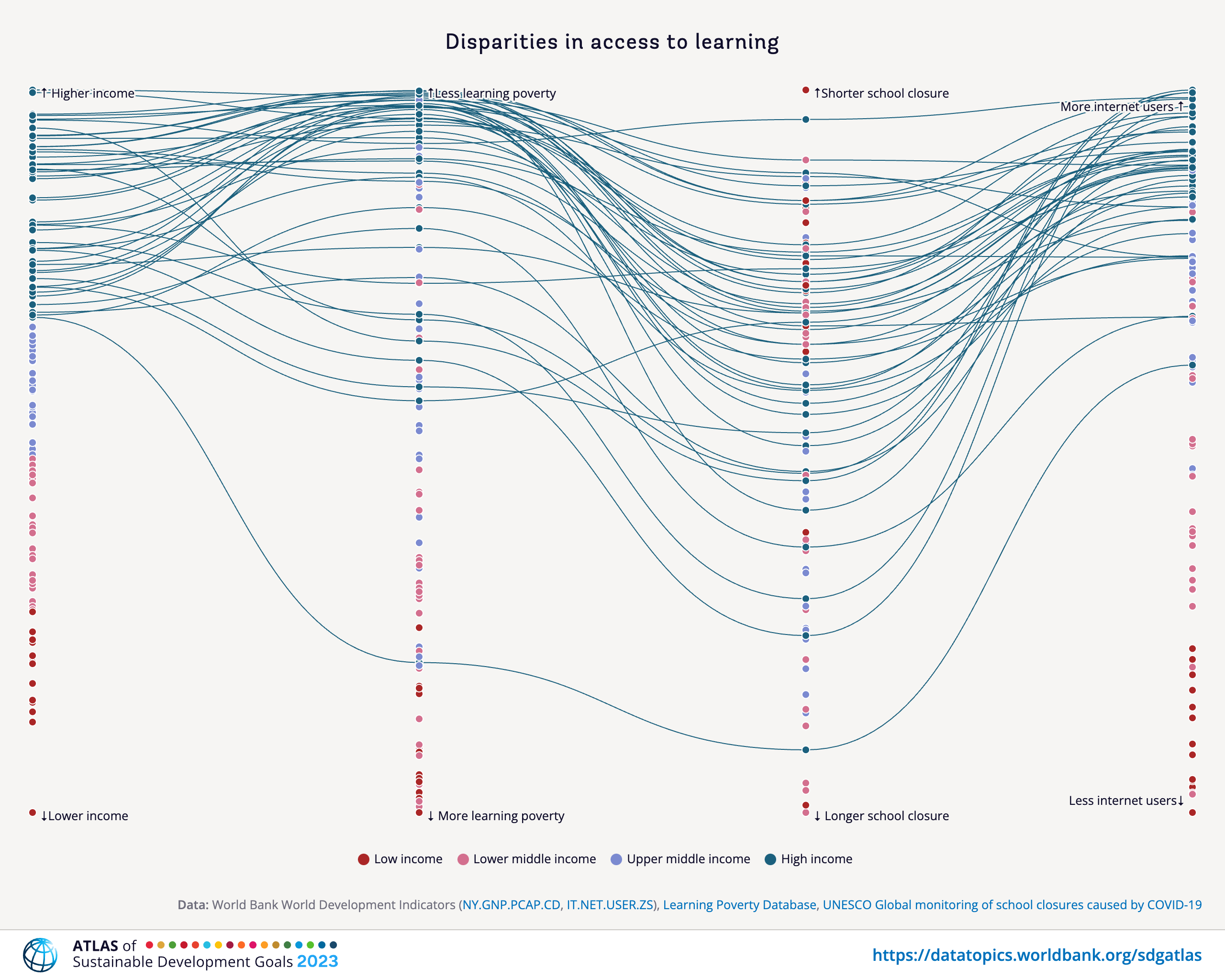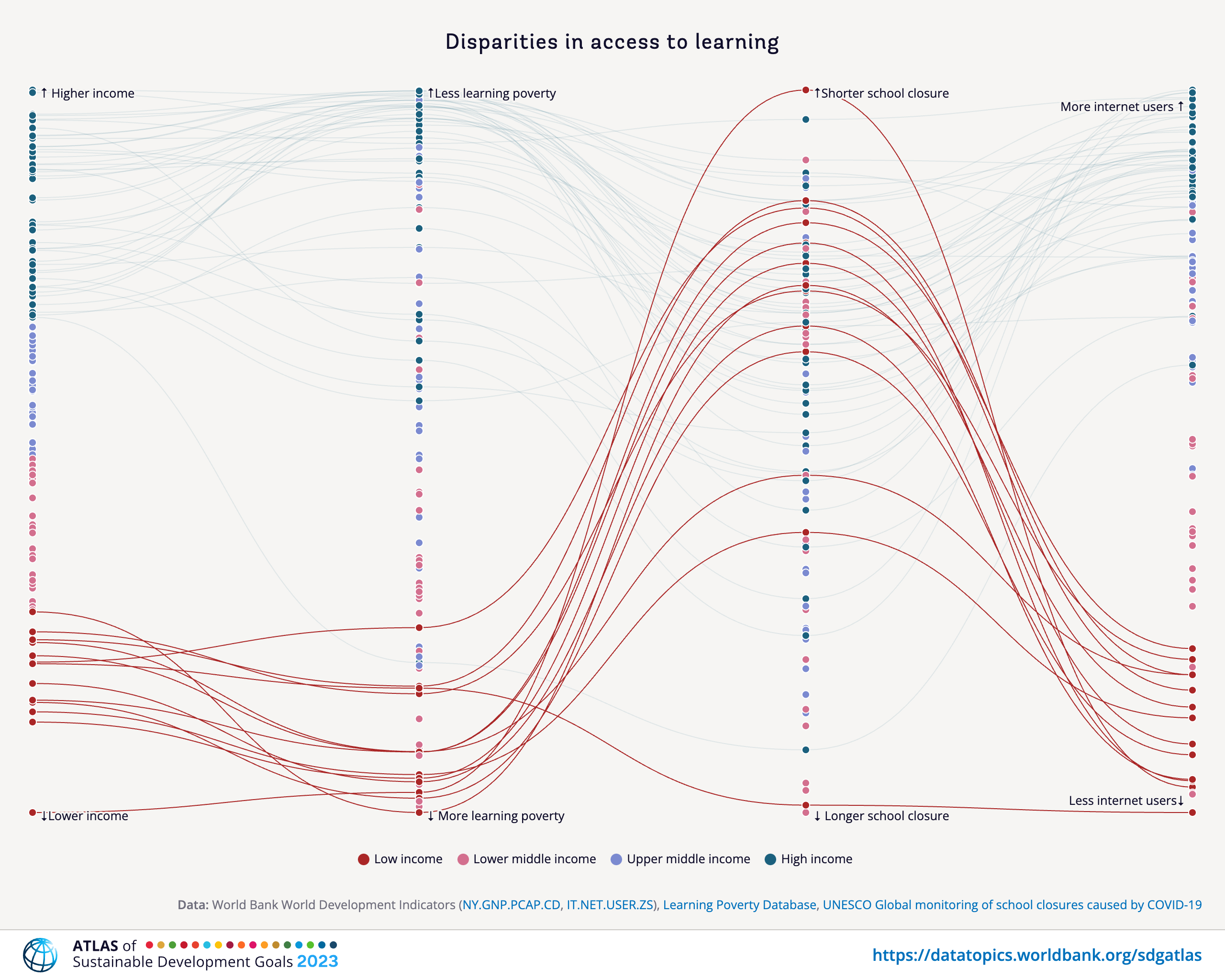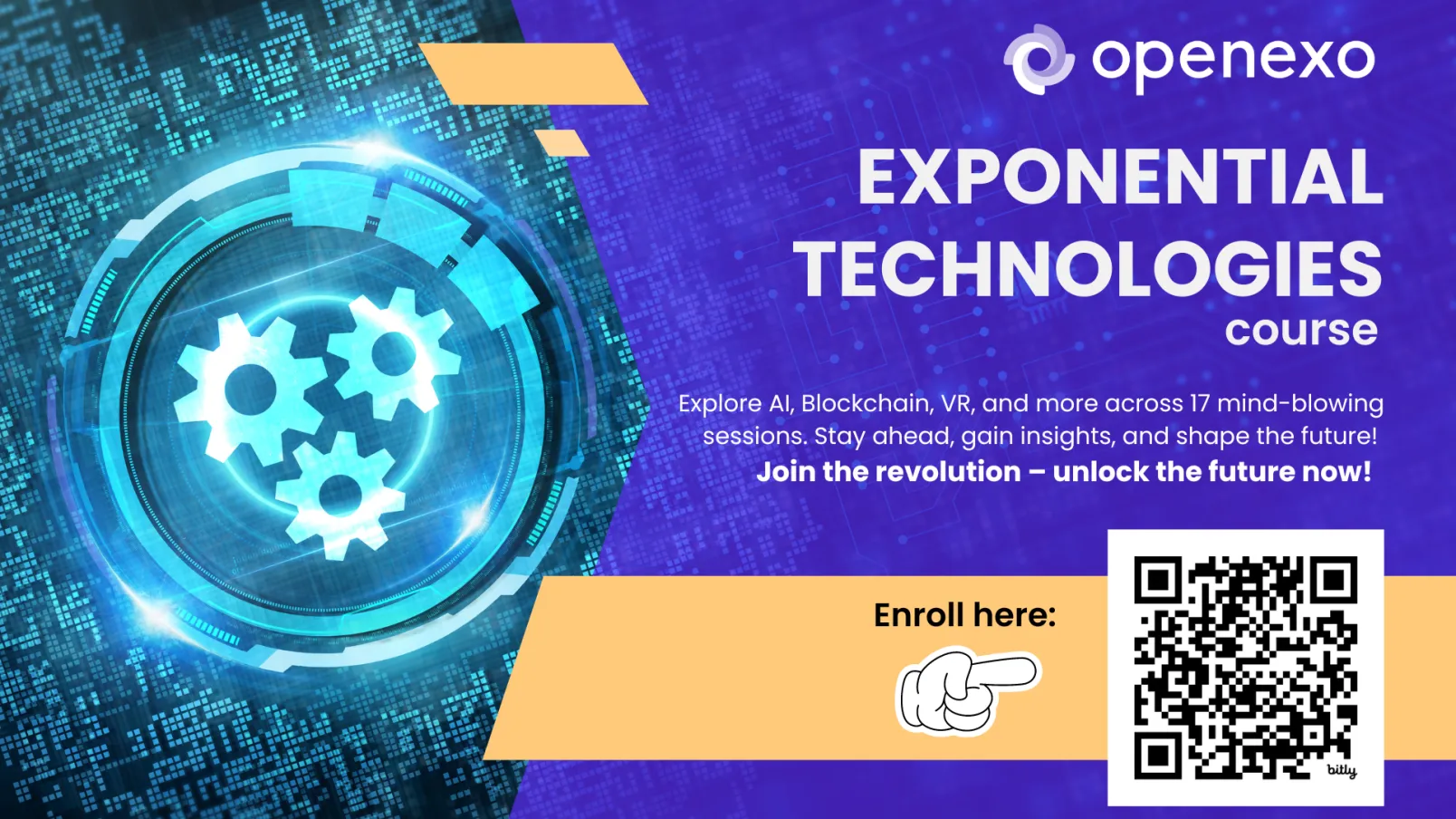
An Entire Generation Left Behind: How COVID-19 Created an Education Crisis
Limited internet access in low- and middle-income countries, with less than 50 percent penetration in 95 percent of low-income nations, hindered remote learning during the pandemic, underscoring the urgent need for significant investments in ICT infrastructure and digital skills to achieve SDG 4.
The COVID-19 pandemic has created an unprecedented crisis for education and learning around the world. School closures and other disruptions over the past two years have exacerbated what was already a severe learning crisis, especially for children in low- and middle-income countries. This has significantly set back progress towards Sustainable Development Goal 4 on ensuring inclusive and equitable quality education.
A new report titled “The State of Global Learning Poverty: 2022 Update” from The World Bank stresses that learning poverty – defined as the percentage of 10-year-olds unable to read and understand a simple text – was already at crisis levels before the pandemic hit. The latest data shows that even then, over 50% of 10-year-olds in low- and middle-income countries were unable to achieve these basic reading proficiency levels.
Since COVID-19, this learning poverty rate has sharply increased. Prolonged school closures, lack of access to remote learning, and broader socioeconomic impacts on vulnerable families have severely disrupted education for an entire generation of students. The report estimates that without urgent action, 70% of 10-year-olds in low- and middle-income countries could now be in learning poverty.
SDG 4 after Covid-19 pandemic
SDG 4 aims to ensure inclusive and equitable quality education and promote lifelong learning opportunities for all by 2030. However, the COVID-19 pandemic and associated school closures have caused major setbacks towards this goal globally.
According to UNESCO estimates, over 1.6 billion children in 190 countries were affected by school closures during the peak of the pandemic. The average student worldwide saw schools fully or partially closed for 199 days between March 2020 and September 2021 – nearly a full academic year of disrupted education.
These prolonged disruptions to in-person instruction and lack of access to remote learning for many disadvantaged students have led to alarming shortfalls in learning. Recent assessments show the average student globally is now roughly one year behind where they would be expected to be based on pre-pandemic trajectories. Learning losses are even greater in low-income countries, averaging 14 months by some estimates.
To get SDG4 progress back on track despite these COVID-19 impacts, governments and international organizations need to prioritize evidence-based initiatives focused on learning recovery and acceleration.
It is vital to counteract the severe learning poverty increases caused by COVID-19 and get the world back on track towards achieving SDG4 by the 2030 deadline. To recover from this and accelerate progress, the report introduces a new RAPID framework. This provides a menu of policy options across five pillars:
- Reach all children with integrated support across the health, social protection, and education sectors
- Accurately assess learning levels using standardized diagnostic tests
- Prioritize teaching fundamental literacy and numeracy skills
- Improve the quality of classroom instruction and teaching methods
- Address psychosocial health issues caused by prolonged school closures
Disparity after pandemic
The shift to remote learning during school closures highlighted massive digital divides between high-income and low-income countries. More affluent nations had a greater capacity to move education online, given wider access to the internet, electricity, computers, and tablets. However, these options were largely unavailable across poorer regions.
This exacerbated learning losses and knowledge gaps during the pandemic, setting back progress on SDG 4‘s goal of inclusive and equitable education. It also revealed gaps in technical skills and meaningful access to technology. This links directly to SDG target 4.4 – ensuring youth and adults acquire the relevant digital, technical, and vocational skills needed for employment and entrepreneurship.
The severe impact of school closures on learning poverty rates shows the urgency of investing in both digital infrastructure and skills development. Achieving SDG 4 will require closing digital divides through universal, affordable internet access and computer availability. It also necessitates updated curriculums focused on building digital literacy, online learning capacity, and real-world technical abilities that youth and adults need to participate fully in an increasingly technology-driven economy and society.

The shift to remote learning was not viable for most students in low- and middle-income countries due to the widespread lack of internet access and digital infrastructure, as we covered in the previous article. Recent statistics indicate that in 95 percent of low-income nations, less than 50 percent of the population has access to the Internet. Without this critical connectivity, instruction could not transition online at scale to reach children during school shutdowns.
This exacerbated the disparities in learning continuity between wealthier and poorer nations. While many high-income countries had pre-existing capacity for online education, most students in resource-constrained regions had no way to access virtual lessons, digital content, or remote support from teachers. Hence, learning loss rates were much higher in these countries.
Bridging the digital divide by expanding meaningful connectivity and access to technology is vital for resilience against future shocks. Achieving SDG 4 will require major investments in ICT infrastructure and digital skills development in disadvantaged regions. This can equip all countries to utilize online/blended instruction and protect learning continuity if physical classrooms are disrupted again.

Lighting the Way Forward: Democratize Learning From High-Tech to No-Tech
Yet despite the sobering crisis, emerging innovations provide hope if we focus them on those furthest behind. Exponential technologies, alternative delivery methods, and offline systems could democratize learning for disadvantaged students worldwide. Apps optimized for low-tech devices are already allowing personalized education without consistent internet. WhatsApp-based tutoring is connecting refugee students to volunteer teachers globally. Low-cost solar-powered projectors are helping rural teachers provide engaging video lessons.
Likewise, AI enables customized interactive learning at an unmatched scale. Augmented and virtual reality solutions are bringing highly immersive experiences to under-resourced schools. Online learning platforms allow progress tracking in vulnerable communities. Combined with expanded infrastructure for affordable access, these technologies can make quality education universally available.
But we cannot overlook simpler solutions for those lacking connectivity. Innovations in offline delivery, like low-cost projectors and basic phone apps, are already expanding access. Reinventing traditional mediums like radio and TV alongside distributed print materials can advance learning amidst instability. Committing to students where they are rather than where we wish them to be, education need not rely on expensive infrastructure.
Of course, universal broadband and hardware access remain essential long-term, but simpler solutions can circumvent prohibitive costs in the interim. With pragmatic creativity focused squarely on those at risk of being left irrevocably behind, we can open new educational windows right now.
This moment calls on our shared humanity to empower disadvantaged youth through any means possible. By rising to meet this
extraordinary challenge, we take responsibility both for vulnerable children’s futures and for the world we hope to create – one where no one is denied potential by early deprivation of knowledge. The technology exists; now, our conscience must guide how we deploy it.

Register for the Exponential Technologies self-paced course
AVAILABLE NOW ON THE OPENEXO LEARNING HUB
ExO Insight Newsletter
Join the newsletter to receive the latest updates in your inbox.








